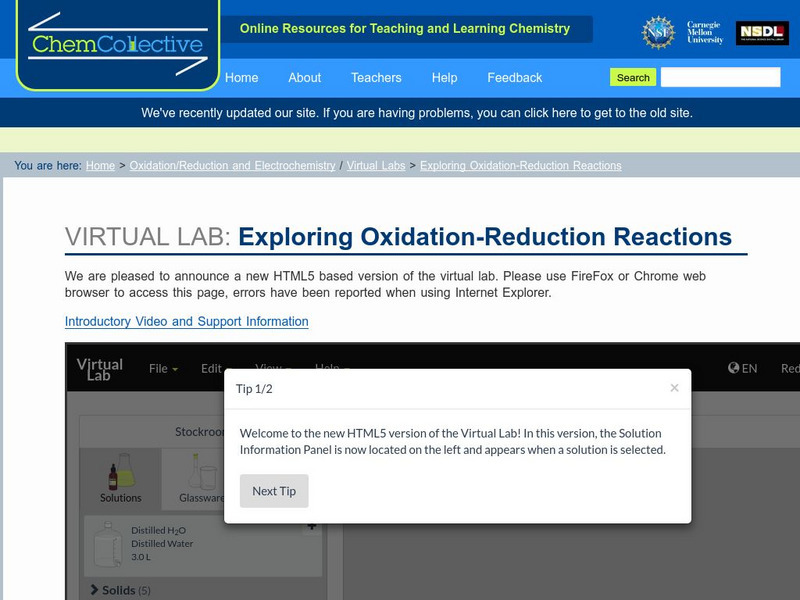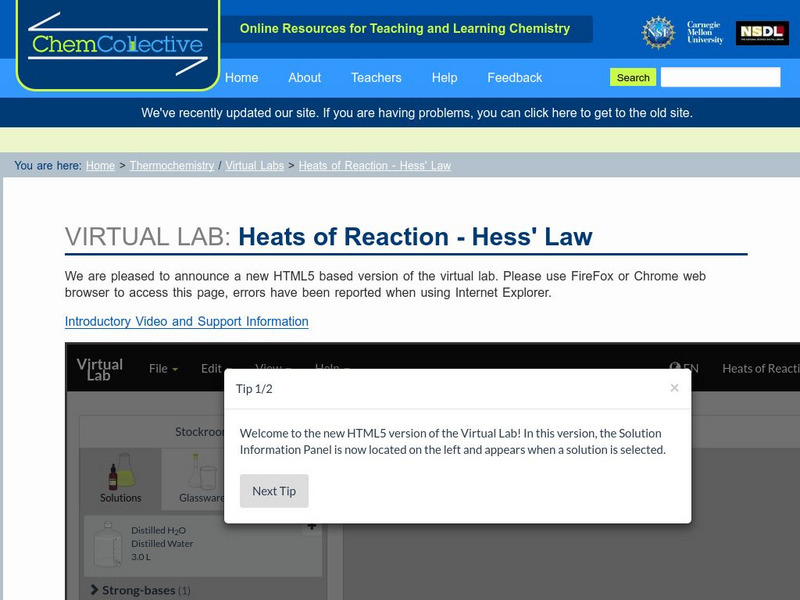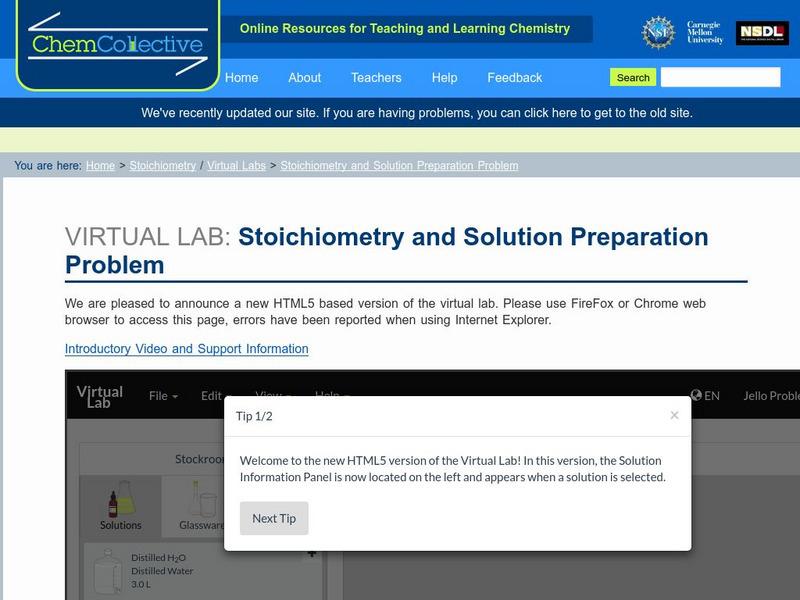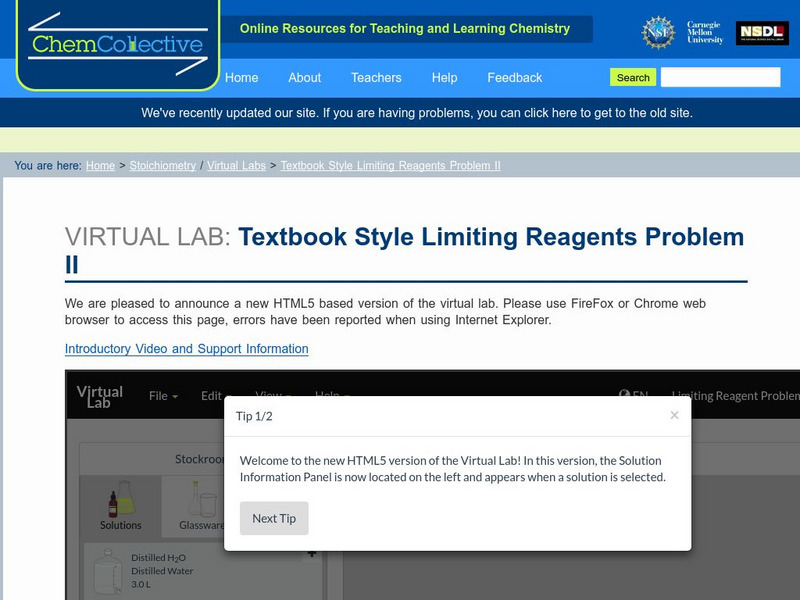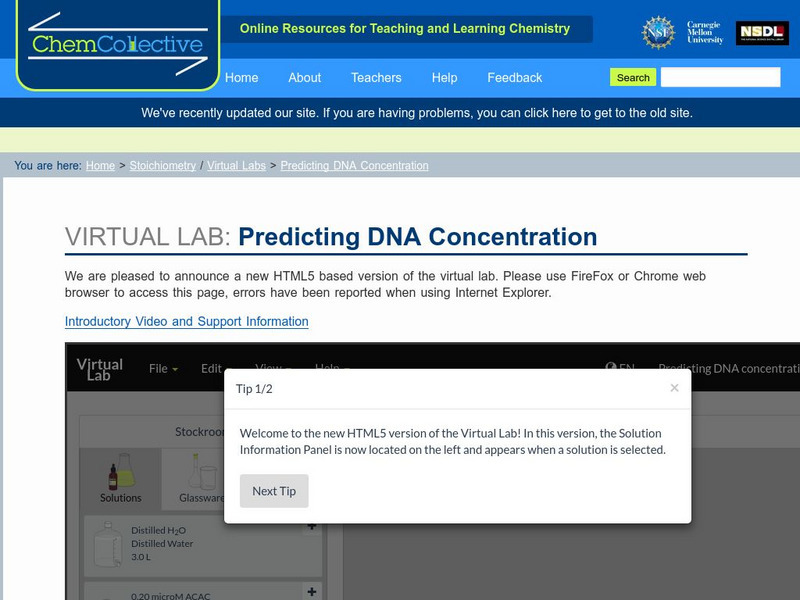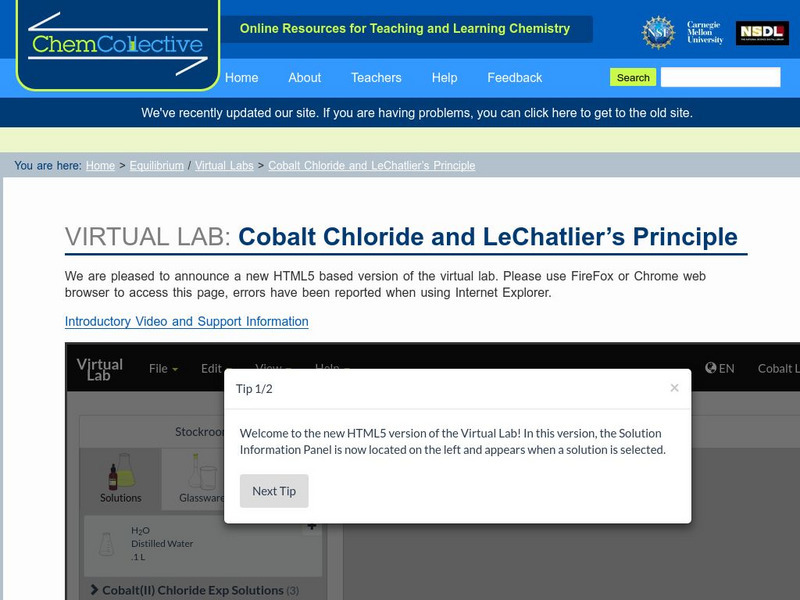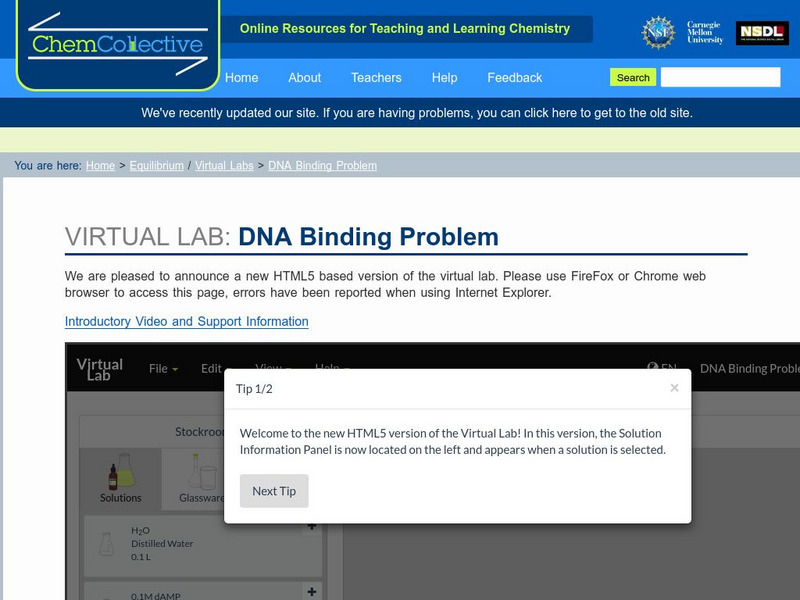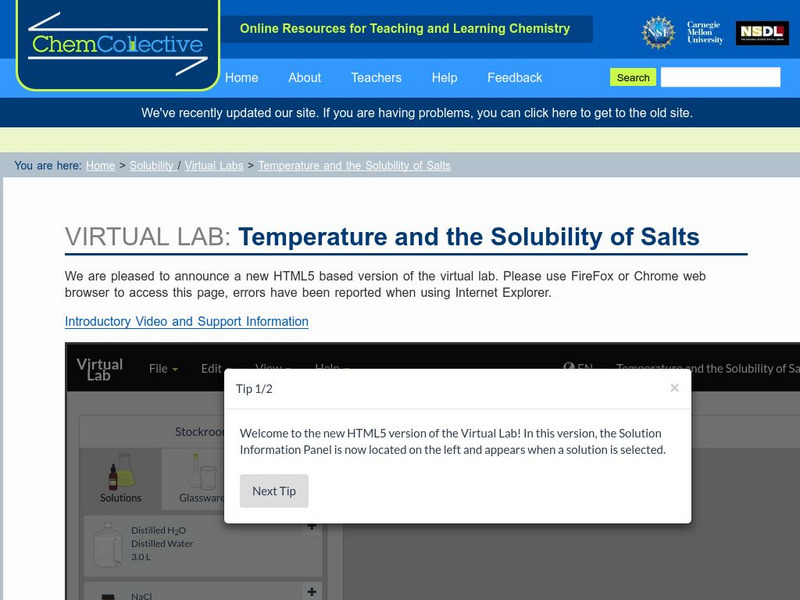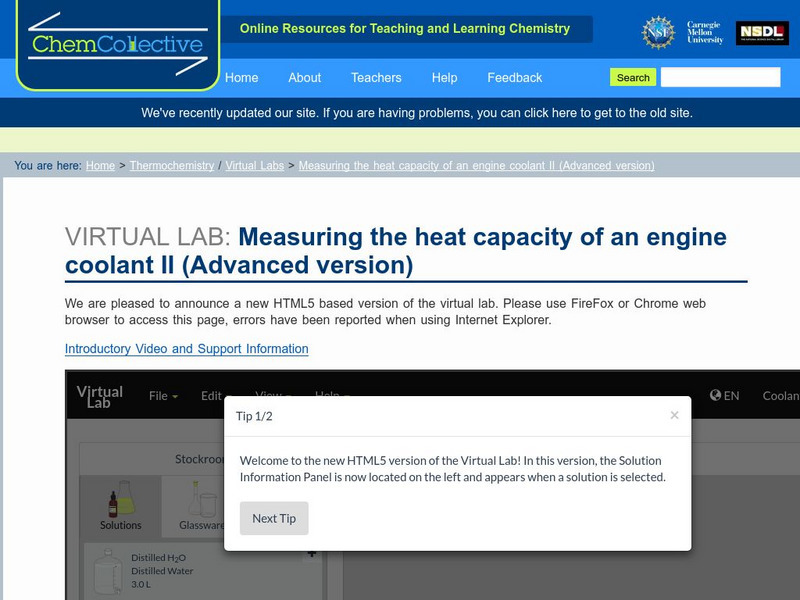Hi, what do you want to do?
Chemistry Collective
Chem Collective: Metal Ligand Binding
Use silver chloride to determine the binding constant for a metal ligand complex.
Chemistry Collective
Chem Collective: Determine the Concentration of the Unknown Strong Acid
Perform a titration using an indicator to determine the concentration of an HCl solution.
Chemistry Collective
Chem Collective: Designing a Buffer Solution With a Specific P H
Create a buffer solution at a specific pH using a weak acid and its conjugate base.
Chemistry Collective
Chem Collective: Unknown Base Problem
Perform an experiment to determine the pKa and concentration of an unknown weak base.
Chemistry Collective
Chem Collective: Alcohol Density Problem
Determine the concentration of an alcohol solution from its density.
Chemistry Collective
Chem Collective: Creating a Buffer Solution
An exercise to design a buffer solution with specific properties.
Chemistry Collective
Chem Collective: Dna Dye Binding: Equilibrium and Buffer Solutions
Students examine equilibrium and buffer solutions in a biological setting.
Chemistry Collective
Chem Collective: Exploring Oxidation Reduction Reactions
Design an experiment to order Cu, Mg, Zn and Pb from strongest to weakest reducing agent.
Chemistry Collective
Chem Collective: Heats of Reaction: Hess's Law
This activity provides a demonstration of Hess's Law using three reactions: the solubility NaOH in water, the solubility NaOH in HCl, and the reaction of a solution of HCl and a solution of NaOH.
Chemistry Collective
Chem Collective: Stoichiometry and Solution Preparation Problem
In this limiting reagents problem, students mix together solutions in different ratios in an attempt to produce a final solution that contains only 1 product.
Chemistry Collective
Chem Collective: Textbook Style Limiting Reagents Problem Ii
In this activity, students practice with experiments involving limiting reagents and the test their knowledge to determine the concentration of an unknown solution.
Chemistry Collective
Chem Collective: Predicting Dna Concentration
In this limiting reagents problem, students are given specific concentrations of DNA solutions and are asked to predict what products and reactants will remain after a specific volumes are mixed and reaction has occurred.
Chemistry Collective
Chem Collective: Cobalt Chloride and Le Chatlier's Principle
In this activity, students safely explore the equilibrium reaction of the cobalt chloride reaction.
Chemistry Collective
Chem Collective: Dna Binding Problem
In this activity, students explore equilibrium constants in biochemical systems by measuring the binding constant of a DNA-Dye reaction.
Chemistry Collective
Chem Collective: Temperature and the Solubility of Salts
Examine the solubilities of salts based on temperature.
Chemistry Collective
Chem Collective: Determining the Heat of Reaction in Aqueous Solution
In this activity, students perform an experiment to determine the heat of a reaction.
Chemistry Collective
Chem Collective: Measuring the Heat Capacity of an Engine Coolant.
As an analytical chemist at a company developing new engine coolants your task is to determine the heat capacity of a newly developed product and then to determine if its heat capacity is greater of less than that of ethylene glycol.
Chemistry Collective
Chem Collective: Measuring the Heat Capacity of an Engine Coolant Ii
Measure and compare the heat capacity of an unknown liquid with an unknown density.
Chemistry Collective
Chem Collective: Camping Problem I
In this part of the MRE scenario, students measure the enthalpy of a reaction.
Chemistry Collective
Chem Collective: Camping Problem Ii
In this part of the MRE scenario, students determine change in the enthalpy of a reaction as the concentration of reactants are varied.
Chemistry Collective
Chem Collective: Atp Reaction: Thermochemistry and Bonding
Determine the enthalpy of the ATP reaction.
University of Alberta
The University of Alberta: Nmr Spectroscopy
1HNMR theory begins in the nucleus of hydrogen. Complete this tutorial on the 1HNMR spectrum graph to learn about the number of equivalent hydrogens, b) the chemical environment of each hydrogen type and c) the number of neighbouring...
Science Education Resource Center at Carleton College
Serc: Investigating Changes of State: Chemical and Physical Changes
In this chemistry lab, students will investigate, observe, and describe a variety of chemical and physical changes in matter. They will understand that this is part of everyday life.
Science Education Resource Center at Carleton College
Serc: Molar Relationships: Observing a Single Displacement Reaction
In this chemistry lab, students will investigate a single replacement reaction while also using knowledge of molar ratios to determine percent yields.
Other popular searches
- Acid Base Chemistry Labs
- Chemistry Labs of Hydrates
- High School Chemistry Labs
- Christmas Chemistry Labs
- Thermo Chemistry Labs
- Holiday Chemistry Labs
- Introduction Chemistry Labs
- Therm Chemistry Labs
- Online Chemistry Labs
- Chemistry Labs With Candy












